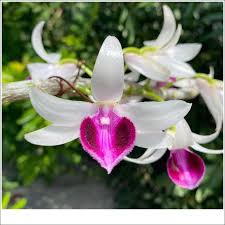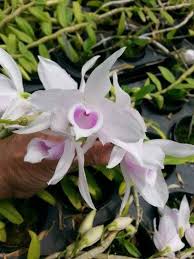
Phalaenopsis orchids, commonly known as moth orchids, are one of the most popular and beloved types of orchids due to their stunning beauty, long-lasting blooms, and relatively easy care. However, to ensure these magnificent plants thrive, it is crucial to provide them with the right growing medium. This article will delve into the best potting mixes for Phalaenopsis orchids, their characteristics, preparation methods, and tips for maintaining optimal growing conditions.
## 1. Understanding Phalaenopsis Orchids
### 1.1 Overview of Phalaenopsis Orchids
Phalaenopsis orchids are native to tropical regions of Asia, where they grow as epiphytes, meaning they typically grow on trees rather than in soil. This unique growing habit necessitates a specialized potting mix that mimics their natural environment.
– **Physical Characteristics:** Phalaenopsis orchids are characterized by their wide, flat leaves and long flower spikes that can produce multiple blooms. The flowers come in a variety of colors, including white, pink, purple, and yellow, and often have intricate patterns and markings.
– **Growth Habit:** As epiphytes, Phalaenopsis orchids have aerial roots that absorb moisture and nutrients from the air and surrounding environment. This trait is essential to consider when choosing a potting mix.
### 1.2 Importance of the Right Potting Mix
The potting mix plays a vital role in the health and growth of Phalaenopsis orchids. A well-formulated mix will provide:
– **Aeration:** Good airflow to the roots is essential for preventing root rot and promoting healthy growth.
– **Moisture Retention:** The mix should retain moisture without becoming soggy, allowing for proper hydration while preventing overwatering.
– **Nutrient Supply:** A suitable potting mix will provide the necessary nutrients for the orchid’s growth.
## 2. Characteristics of an Ideal Potting Mix for Phalaenopsis Orchids
Before exploring specific potting mixes, it is essential to understand the key characteristics that make a mix suitable for Phalaenopsis orchids.
### 2.1 Drainage
– **Importance of Drainage:** Proper drainage is crucial for Phalaenopsis orchids. A mix that drains too slowly can lead to waterlogged conditions, resulting in root rot and other fungal diseases.
– **How to Ensure Good Drainage:** Use coarse materials and larger particle sizes in the mix to facilitate water movement.
### 2.2 Aeration
– **Need for Aeration:** Phalaenopsis orchids thrive in environments with good air circulation. The potting mix should allow air to reach the roots, preventing suffocation and encouraging healthy growth.
– **Role of Aerial Roots:** These orchids have aerial roots that benefit from exposure to air; hence, a mix that allows for air pockets is beneficial.
### 2.3 Moisture Retention
– **Balance of Moisture:** The potting mix should retain enough moisture to keep the roots hydrated while allowing excess water to drain away.
– **Factors Affecting Moisture Retention:** The composition of the mix, including the types of materials used, will influence how well it retains moisture.
### 2.4 Nutrient Availability
– **Nutrient Sources:** A good potting mix should provide essential nutrients for the orchid’s growth. However, it is important to supplement with fertilizers since the mix will eventually deplete its nutrient content.
– **Organic vs. Inorganic:** Organic materials can provide nutrients but may break down over time, affecting the mix’s structure.
## 3. The Best Potting Mixes for Phalaenopsis Orchids
### 3.1 Commercial Orchid Mixes
Many commercial potting mixes are specially formulated for orchids and can be an excellent choice for Phalaenopsis orchids. These mixes often contain a blend of various materials that provide the right balance of drainage, aeration, and moisture retention.
#### 3.1.1 Bark-Based Mixes
– **Composition:** These mixes typically contain fir or pine bark, which provides excellent aeration and drainage. They often include other materials like perlite or coconut coir for added moisture retention.
– **Benefits:** Bark-based mixes are lightweight and allow for good airflow, making them ideal for Phalaenopsis orchids.
#### 3.1.2 Coconut Coir Mixes
– **Composition:** Coconut coir is made from the fibrous husk of coconuts and provides excellent moisture retention. When mixed with perlite or bark, it creates a well-balanced potting mix.
– **Benefits:** Coconut coir is sustainable and biodegradable, making it an environmentally friendly choice for orchid cultivation.
#### 3.1.3 Sphagnum Moss Mixes
– **Composition:** Sphagnum moss is often used in potting mixes for Phalaenopsis orchids due to its ability to retain moisture while allowing good airflow.
– **Benefits:** Sphagnum moss can be particularly beneficial during the winter months when humidity levels may drop, helping to maintain adequate moisture levels around the roots.
### 3.2 DIY Potting Mix Recipes
For those who prefer to create their own potting mix, several recipes can provide an excellent growing medium for Phalaenopsis orchids.
#### 3.2.1 Basic Bark Mix
– **Ingredients:**
– 4 parts pine or fir bark
– 2 parts perlite
– 1 part charcoal (to prevent odor and absorb excess moisture)
– **Preparation:** Mix all ingredients thoroughly and adjust the ratios based on your humidity levels and watering habits.
#### 3.2.2 Coconut Coir and Bark Mix
– **Ingredients:**
– 3 parts coconut coir
– 2 parts bark
– 1 part perlite
– **Preparation:** Combine the ingredients to create a mix that retains moisture while providing good drainage and aeration.
#### 3.2.3 Sphagnum Moss and Bark Mix
– **Ingredients:**
– 2 parts sphagnum moss
– 2 parts bark
– 1 part perlite
– **Preparation:** Mix the ingredients thoroughly to create a mix that helps maintain humidity while allowing for adequate drainage.
## 4. Factors to Consider When Choosing a Potting Mix
### 4.1 Climate and Environment
The local climate can significantly influence the choice of potting mix for Phalaenopsis orchids. In humid climates, mixes with high drainage properties may be preferred, while drier climates may require mixes that retain more moisture.
### 4.2 Watering Habits
Consider your watering habits and the specific needs of your Phalaenopsis orchids when selecting a potting mix.
– **Frequent Watering:** If you water your orchids frequently, a mix with good drainage properties is essential to prevent overwatering.
– **Infrequent Watering:** If you tend to forget to water, a mix that retains moisture better may be more suitable.
### 4.3 Orchid Growth Stage
The growth stage of your Phalaenopsis orchids can also dictate the type of potting mix you choose.
– **Seedlings:** Young orchids benefit from a finer mix that retains more moisture to support their developing root systems.
– **Mature Orchids:** Established orchids can thrive in coarser mixes that provide better aeration and drainage.
## 5. How to Repot Phalaenopsis Orchids
Repotting is an essential part of orchid care, allowing you to refresh the potting mix and promote healthy growth.
### 5.1 When to Repot
– **Signs of Repotting Need:** Look for signs such as roots growing out of the pot, reduced growth, or a breakdown of the potting mix.
– **Best Time to Repot:** Spring is generally the best time to repot Phalaenopsis orchids, as they are coming out of dormancy and actively growing.
### 5.2 Steps to Repot
1. **Gather Materials:** Prepare your new potting mix, pots with drainage holes, and any necessary tools (scissors, stakes, etc.).
2. **Remove the Orchid:** Carefully take the orchid out of its pot, gently loosening the potting mix around the roots.
3. **Inspect the Roots:** Examine the roots for signs of rot or disease. Trim away any unhealthy roots using sterilized scissors.
4. **Potting:** Place the orchid in the new pot and fill in with the fresh potting mix, ensuring the roots are well-positioned and not overcrowded.
5. **Watering:** Water the orchid thoroughly after repotting to help settle the mix around the roots.
## 6. Maintaining Optimal Growing Conditions
### 6.1 Monitoring Moisture Levels
– **Watering Routine:** Regularly check the moisture level of the potting mix. Water when the top inch of the mix feels dry, ensuring that excess water drains out.
– **Humidity Control:** Maintain humidity levels around 50-70% using humidity trays or misting if necessary.
### 6.2 Fertilization Practices
– **Fertilizer Type:** Use a balanced orchid fertilizer, following the manufacturer’s instructions for dilution and frequency.
– **Application Timing:** Fertilize during the growing season (spring and summer) and reduce feeding in the fall and winter when growth slows.
### 6.3 Pest and Disease Management
– **Regular Inspections:** Routinely check for signs of pests such as aphids, mealybugs, or spider mites. Early detection can prevent severe infestations.
– **Treatment Options:** Use insecticidal soap or neem oil to treat pest issues. Ensure good air circulation to minimize fungal diseases.
## 7. Conclusion
Choosing the right potting mix for Phalaenopsis orchids is essential for their growth and overall health. By understanding the specific needs of these beautiful plants and selecting appropriate mixes, orchid enthusiasts can create optimal growing conditions that encourage vibrant blooms
and robust growth. Whether you opt for commercial mixes or choose to create your own, the key is to ensure a balance of drainage, aeration, and moisture retention. With proper care and attention, your Phalaenopsis orchids will thrive and reward you with their breathtaking beauty for years to come.
—


